Books
Books

Kamer I - Oesters
‘Kamer I - Oesters’ is een kort verhaal geschreven in het kader van het kunstproject Beste Anna,. Hierin fungeert de figuur van de openlijk lesbische Rotterdamse schrijfster Anna Blaman als motor voor vragen, gesprekken en correspondenties rondom feminisme, schrijvende vrouwen en de canon, anders zijn, eenzaamheid en vriendschap.
Ook verkent Katinka met dit onderzoek Anna Blaman als personage voor een toekomstige roman. In ‘Kamer I - Oesters’ betreedt de hoofdpersoon Anna’s met een rolkoffer vol boeken van andere schrijvers, fluistert ze hun woorden in de kieren in Anna’s muren en verleidt ze Anna met een pauwendans.
Anna Blaman (1905-1960) was openlijk lesbisch, in die tijd een groot taboe, maar zag zichzelf niet als voorvechter van een beweging. Een belangrijk thema in haar werk is de vraag of we een ander werkelijk kunnen kennen. De personages in haar romans zijn vaak alleen en verlangen naar een ander, die altijd onbereikbaar blijft. In 1948 publiceerde Blaman de roman Eenzaam Avontuur, die erg veel stof op deed waaien vanwege enkele (homo-)erotische personages die in het boek voorkomen.
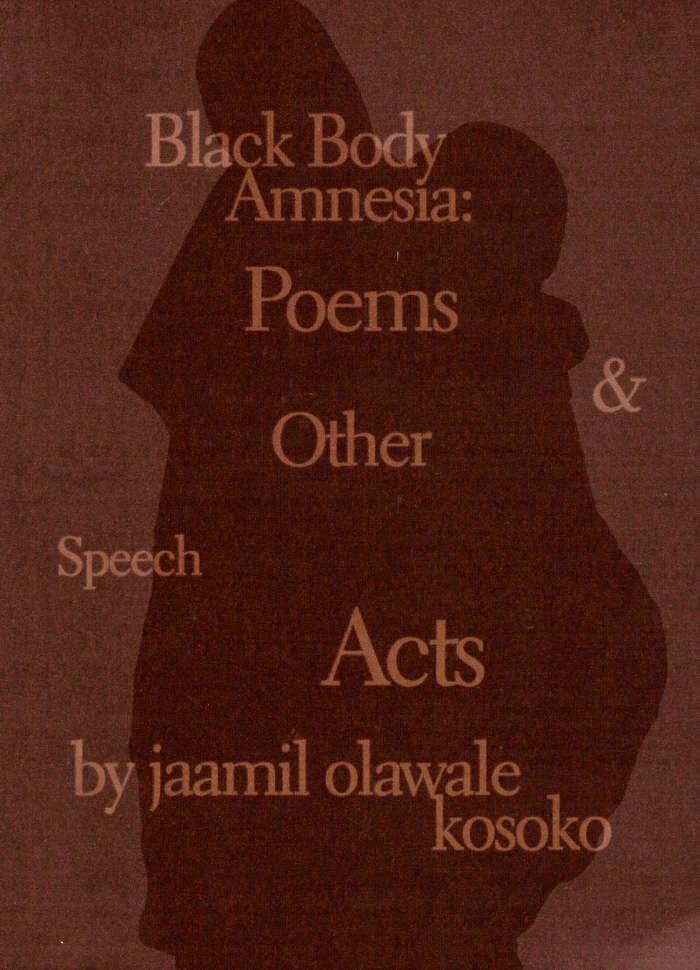
Black Body Amnesia : Poems and Other Speech Acts
Blending poetry and memoir, conversation and performance theory, Black Body Amnesia: Poems and Other Speech Acts enlivens a personal archive of visual and verbal offerings written and organized by poet, performance artist, educator, and curator Jaamil Olawale Kosoko. Inspired by Audre Lorde’s concept of biomythography, Kosoko mixes personal history, biography, and mythology to tell a complex narrative rooted in a queer, Black, self-defined, and feminist imagination.
This collection of intertextual performance acts captures the ephemeral data often lost or edited out of Kosoko’s live performances. Developed alongside their ongoing, multi-media live art project, American Chameleon, and elaborating on the artist’s unique practice of Socio-Choreological Mapping as a means to explore queer theories of the body and its "hydraulics of grief," this book offers critical-creative frames to consider the fluid identities and lifeworlds embedded inside contemporary Black America.
With an introduction by editor Dahlia (Dixon) Li, and contributions by Sara Jane Bailes, mayfield brooks, Brenda Dixon-Gottschild, Ashley Ferro-Murray, Nadine George-Graves, Nile Harris, Ima Iduozee, Lisa Jarrett, Bill T. Jones, Jennifer Kidwell, Malkia Okech, Ada M. Patterson, Tracy K. Smith, and Jillian Steinhauer.
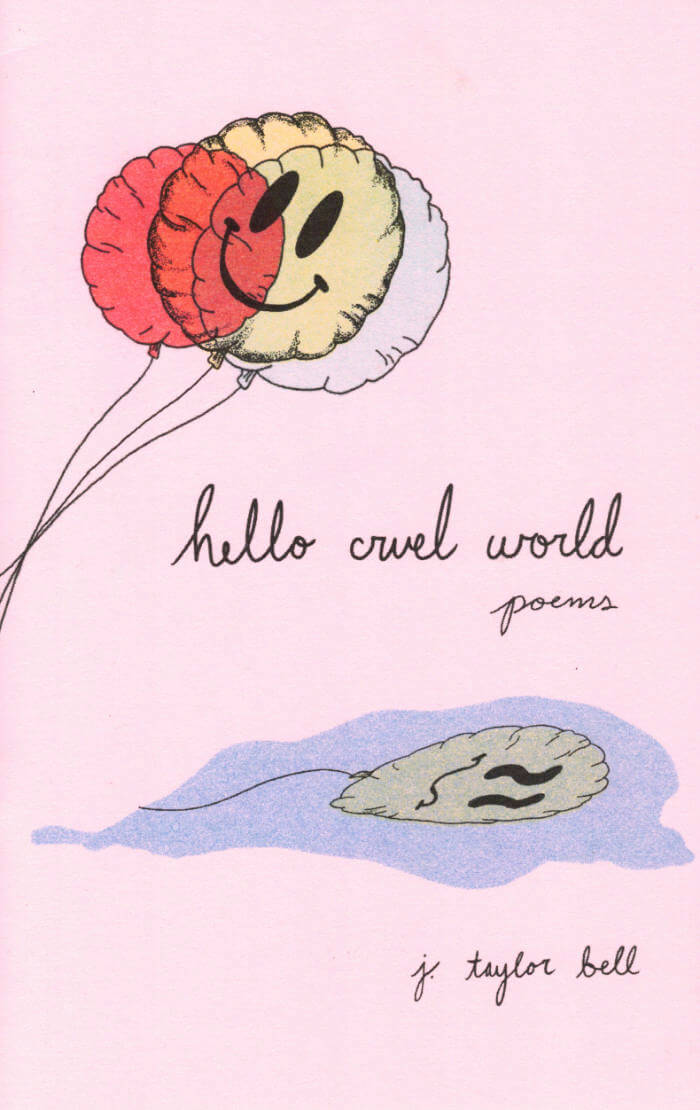
Hello Cruel World
J. Taylor Bell’s first chapbook, Hello Cruel World, solicits the reader’s undying companionship while navigating late capitalist dystopia. These poems are a downward-facing dogma set in a world catching more on fire each day; to the blaze, they offer neither gasoline nor water. Instead, they are an elegy to barely getting by, against the arrogance of solutions, and they are extremely in favor of seeking solidarity in Outback Steakhouse’s famed Bloomin’ Onion dish.
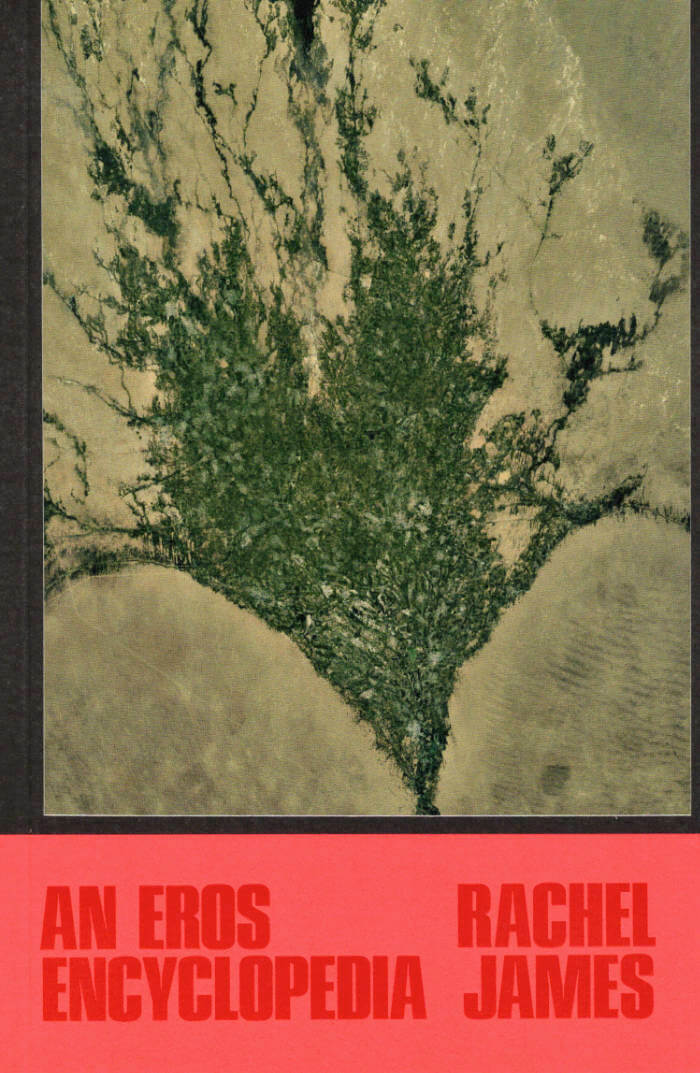
An Eros Encyclopedia
To want to reveal; to want to reveal enough; to desire; to desire in the right way, the right amount: in her debut book, Rachel James narrates the desiring subject’s nuanced and entangled intimacies with histories of power. How, in other words, under patriarchy, against misogyny, within capitalist strictures, is knowledge shaped, contained, and transferred? Tracing traditions of theater, pedagogy, and faith, An Eros Encyclopedia offers up desire and the attunement to its many objects as the atmosphere of a life—a method to navigate, perceive, and relate against the illusion of separation.

Americón
Nico Vela Page’s Americón is a collection of poems in Spanglish that weaves a space for the queer, trans body to know the land, and itself, as extensions of each other. The land is the desert of Northern New Mexico, the forgotten Pan-American Highway, the space between our thighs, the quaking cordillera of Chile, the moans of elk, and the ripe fruit waiting to be picked. Through archive, attention, and erotic ecopoetics, Page’s debut collection of poems extends far across the page, the gender binary, language, and the Americas to find out who we are by asking where we are.
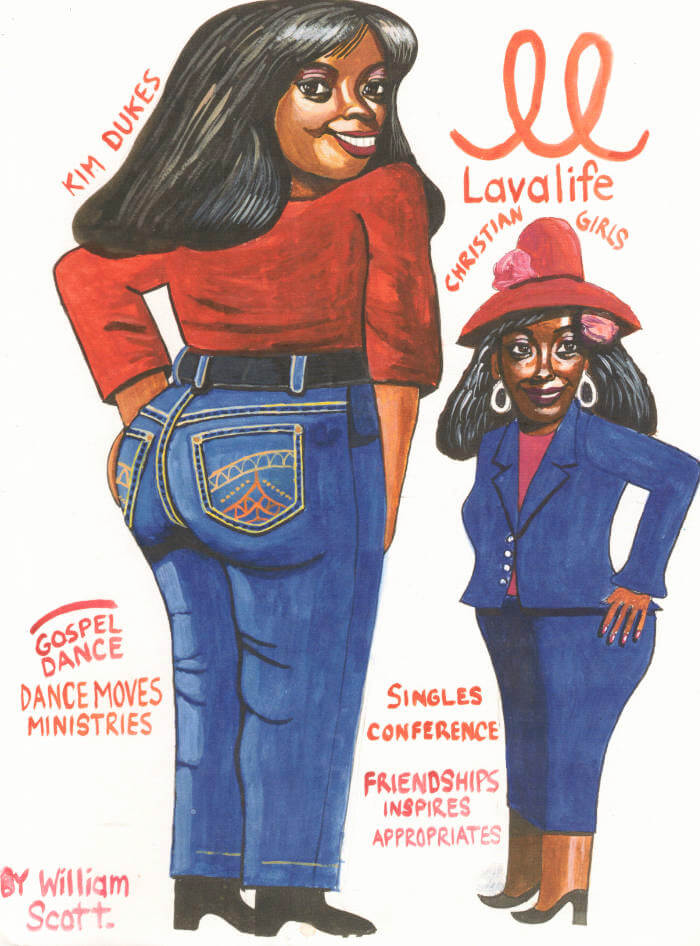
William Scott
Covering the past thirty years of William Scott's practice, this monograph offers the largest comprehensive selection of paintings, drawings, masks and architectural models, as well as an unique insight on his creative and transformative approach.
Published on the occasion of Malmö Konsthall William Scott's exhibition at Mälmo Konsthall en 2022.
William Scott (born 1962 in San Francisco) has developed his own artistic practice while working at Creative Growth, an art center in Oakland where people with development disabilities are given the opportunity to work and advance creatively as artists. Combining image and text, his colourful paintings tie in stylistically with current popular culture. Scott's vividly graphic and highly detailed paintings, drawings, and sculptures explore the intersections of community, cultural memory, faith, and science fiction. "Rebirth" is a constant subject for the artist, who reimagines the social topography of his native San Francisco as well as new, interstellar organizations. His portraits depict family members and neighbors, and celebrate Black actors, musicians, and civil rights leaders. For Scott, painting is a transformative as well as a documentary tool; a way to re-craft his personal narrative and even undertake extraordinary acts.
Edited by Nicola Wright
Texts by Carson Cole Arthur, Nana Biamah-Ofosu, Helen Delaney, Tom di Maria, Simona Dumitriu, Nathan Hamelberg, Kathleen Henderson, Matthew Higgs, William Scott, Nicola Wright

Emmy Hennings / Sitara Abuzar Ghaznawi
Emmy Hennings, Sitara Abuzar Ghaznawi
As a cofounder of Cabaret Voltaire in 1916, Emmy Hennings, with her partner, the Dadaist Hugo Ball, is recognized as having established and environment for collective experimentation. This book gathers an extensive collection of Hennings's writings, ephemera, and art, to give shape to a practice and an individual so ofter flattened for the sake of art historical narrative.
In the exhibitions held at Cabaret Voltaire and at the Swiss Institute in 2020, Sitara Abuzar Ghaznawi made evocative displays that created space for a deeper engagement with Hennings's life and art. For this publication, she has made new collages, combining found materials and working tools suck as adhesive strips, supplemented by graphic gestures and subjective indexes such as cigarette butts. By bringing the Hennings archive into dialogue with her own work, Ghaznawi considers the manner in which an individual's multiple identities guide the accumulation of personal experience, be they her own or those of a woman she never met. Commissioned on the occasion of her exhibitions, and published together here for the first time, are texts by Ghaznawi's friends and collaborators Michael Zimmerman, Samuel Lala, Nils Amadeus Lange, Sophia Rohwetter, Der Serpas, Olamiju Fajemisin, Samiran Istifan, Timur Akhmetov and Furqat Palvan-Zade.
Published following the exhibitions Emmy Hennings / Sitara Abuzar Ghaznawi at Cabaret Voltaire, Zurich, and the Swiss Institute, New York, in 2020-2021.
Emmy Hennings (1885–1948) was a writer, actress, cabaret artist and co-founder of the artists' bar with Hugo Ball, and probably the most present figure at Cabaret Voltaire. The fact that she received little attention as a writer and artist may be due to various reasons. Perhaps it was the distinct language, or the general uneasiness at dealing with her Catholicism; whatever it was, her trace is missing in the male-dominated Dada historicisation. Only recently has Hennings received recognition, and indeed beyond the role of cabaret star. Whoever reads her novels, poems, and reviews will encounter a woman for whom writing was a survival strategy. She astutely analyses her existence and stages herself as a multiple.
Sitara Abuzar Ghaznawi (born 1995 in Ghazni, Afghanistan) lives and works in Zurich and Obwalden. Her assemblages transgress forms and space, revealing a questioning of institutional structures and accepted ideas of craft and taste. In her sculptural transformations her processes insist on maintaining the visibility of the lowly beginnings of her materials, forming strong, shameless and rigorous poetries.
Edited by Simon Castets and Salome Hohl.
Texts by Salome Hohl, Laura McLean-Ferris, Michael Zimmerman, Samuel Lala, Nils Amadeus Lange, Sophia Rohwetter, Der Serpas, Olamiju Fajemisin, Samiran Istifan, Timur Akhmetov, Furqat Palvan-Zade.
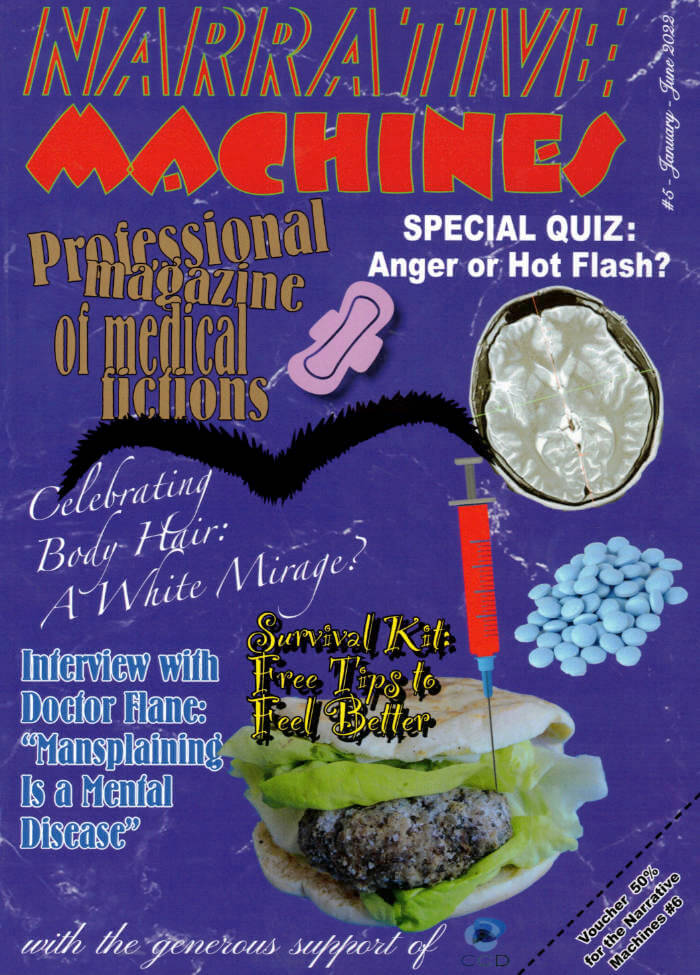
Narrative Machines – Professional magazine of medical fictions
An artist's book disguised as a medical publication written by six fictional women characters from Morocco in free wheeling, Narrative Machines clothes truth with falsehood. With wry irony and Google English it comments on paranoia, fake news, patriarchy, power and media ganging together in the Maghreb (and everywhere else). But it also shows a chosen community of women who confide, support each other and laugh a good load.
Are there weird questions that have been haunting you all your life? Do you wonder why you pass out each mother in law comes to your place? Do you smell fish when you cook meat? Do you know of miraculous medical machines that have been forgotten by official history? What's your take on alternative medicine? Have you ever heard about the Markar, the cardiological device invented by King Hassan II of Morocco? Do you love watching Noujoum Al 3ouloum (Stars of Sciences)? Is your herbalist your best friend? Do you ever wonder if you should wax your arms? In your daily life, do you struggle sometimes with your feminist ethic? Do you put snail cream on your face? Write to us! Join our community! Be part of the Narrative Machines family!
Ghita Skali (born 1992 in Casablanca) is an artist based in Amsterdam. She studied in France, first at Villa Arson, Nice then at the post-graduate program of the Fine Arts School in Lyon. She was a De Ateliers (Amsterdam) resident between 2018 and 2020. She notably exhibited recently at Kunsthal extra City (Antwerp), Palais de Tokyo (Paris) and at the Stedelijk Museum (Amsterdam).
Texts by Kaoutar Chaqchaq, Ayla Mrabet, Ghita Skali
Graphic design: Roxane Maillet
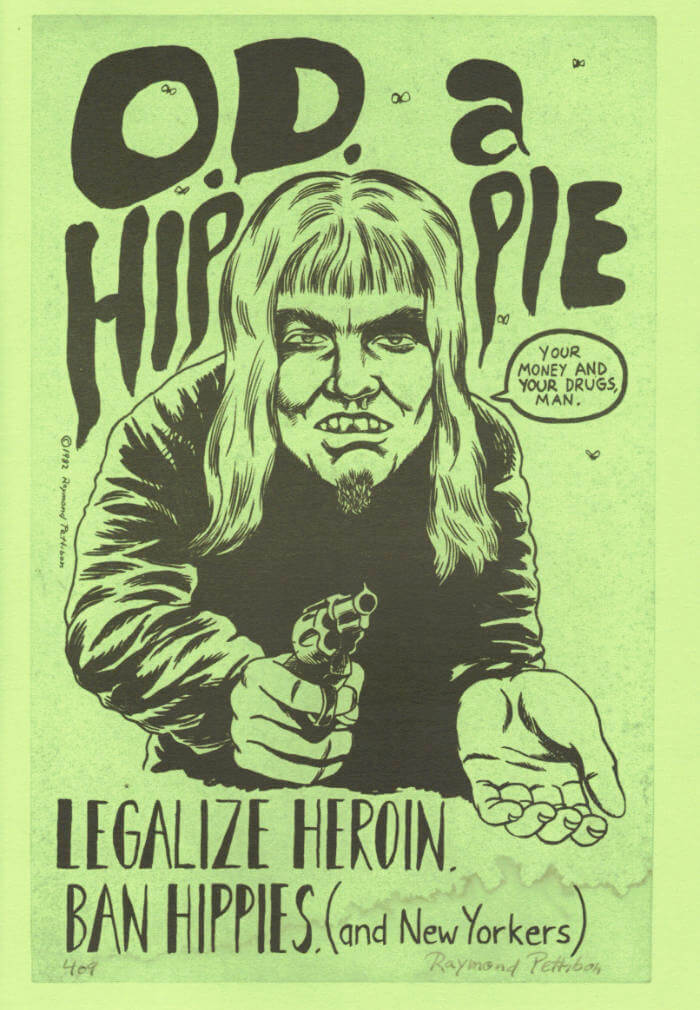
Selected Works From 1982 To 2011
An anthology of Pettibon's drawings.
Reprint of the book first published in 2014.
Raymond Pettibon (born 1957 in Tucson, lives and works in Venice Beach) is mostly known for his comic-book-like drawings to which he appends disconcerting and sarcastic texts. His work embraces a wide spectrum of American “high” and “low” culture, from the deviations of marginal youth to art history, literature, sports, religion, politics, and sexuality. Taking their points of departure in the Southern California punk-rock culture of the late 1970s and 1980s and the “do-it-yourself” aesthetic of album covers, comics, concert flyers, and fanzines that characterized the movement, his drawings have come to occupy their own genre of potent and dynamic artistic commentary. As well as artist's books, fanzines, and prints Pettibon's production includes animations and large wall installations.

Bodies in Scattered Light
New series of paintings by the Swiss artist, that examine the role of humankind in nature and within its social fabric on a philosophical-anthropological level.
"I asked Andriu Deplazes if he had always wished to be a painter. No, he said. For a time, he had trained to be a classical musician, but turned away from music because there was something repellent about the need to demonstrate virtuosity. To be a virtuoso, as the moral world depicted in these paintings clearly shows, is not the same as having virtue. And yet, at the same time, there are still traces of virtuosity in Deplazes' practice: in the idealised landscapes that he renders, and in the easy depiction of animal life. It is only humans that he will not denigrate with such perfection. Their overpainted faces do not allow them to be captured as things, but rather present them as subjects. They elude categorisation because they are responding, in real time, to what they see in us." Adam Jasper
Born 1993 in Zurich, Andriu Deplazes lives and works in Zurich, Brussels and Marseille. His paintings create a kind of parallel cosmos that questions the habitual ways of seeing and expectations of the beholder. Wide landscapes in colourfully powerful large format are the setting for curious characters who sometimes melt into the vegetation around them or appear strangely remote from it. His work has been exhibited throughout Europe since 2015.

What happens between the knots?
Anthony Huberman, Jeanne Gerrity
The third volume of the Wattis Institute's annual reader is informed by themes found in the work of Cecilia Vicuña, including ecofeminism, indigenous forms of knowledge, poetry and politics, dissolution and extinction, exile, dematerialization, regeneration, and environmental responsibility.
The Wattis Institute's annual reader, A Series of Open Questions, provides an edited selection of perspectives, images, and references related to the Wattis's year-long "On our mind" research seasons. Each volume includes newly commissioned writing by members of the research season's core reading group, as well as text and visual contributions by a diverse range of other artists and writers. The title of each reader takes the form of a question and becomes, as new books are published, a gradually evolving series of open questions.
Contributions by Gloria Anzaldua, Elvira Espejo Ajca, Erika Balsom, María Berrios, Marisol de la Cadena, Lynne Cooke, Miho Dohi, Ricki Dwyer, Silvia Federici, Tonya Foster, Phillip Greenlief, Sheroanawe Hakihiiwe, Brian Karl, Dionne Lee, Zoe Leonard, Rosemary Mayer, Koyoltzintli Miranda-Rivadeneira, Denise Newman, Thao Nguyen Phan, Frances Richard, Dylan Robinson, Abel Rodriguez, Oscar Santillan, Alessandra Troncone, Anna Lowenhaupt Tsing, Ignacio Valero, Cathrine Veikos, Cecilia Vicuña, Diego Villalobos, Jacopo Crivelli Visconti, Carla Zaccagnini.

Why are they so afraid of the lotus?
Based on questions raised by the work of filmmaker Trinh T. Minh-ha, the second volume of the Wattis Institute's annual reader includes new writing and art by Ranu Mukherjee, Kathy Zarur, Shylah Hamilton, Astria Suparak, and Tamara Suarez Porras, as well as written and visual contributions by Trinh T. Minh-ha, Mei-mei Berssenbrugge, Sky Hopinka,Christina Sharpe, Christine Wang, Camille Rankine, Dionne Brand, Renee Gladman, Theresa Hak Kyung Cha, Kameelah Janan Rasheed, and Steffani Jemison, among others.
What does the promise of "speaking nearby" rather than "speaking about" look like today? What are the politics of hospitality? What are the problematics of "postfeminism," and how do we challenge the West as the authoritative subject of feminist knowledge? What are the ways that language can be a site of rupture? How do we generate mistrust in the "well-written," and how can poetry be a radical act of refusal? How can we be subjects that believe in land and not borders? What influence has technology and digital space had on the "making and unmaking of identity"? How do we navigate a cyclical eruption of decolonizations?
The Wattis Institute's annual reader, A Series of Open Questions, provides an edited selection of perspectives, images, and references related to the Wattis's year-long "On our mind" research seasons. Each volume includes newly commissioned writing by members of the research season's core reading group, as well as text and visual contributions by a diverse range of other artists and writers. The title of each reader takes the form of a question and becomes, as new books are published, a gradually evolving series of open questions.
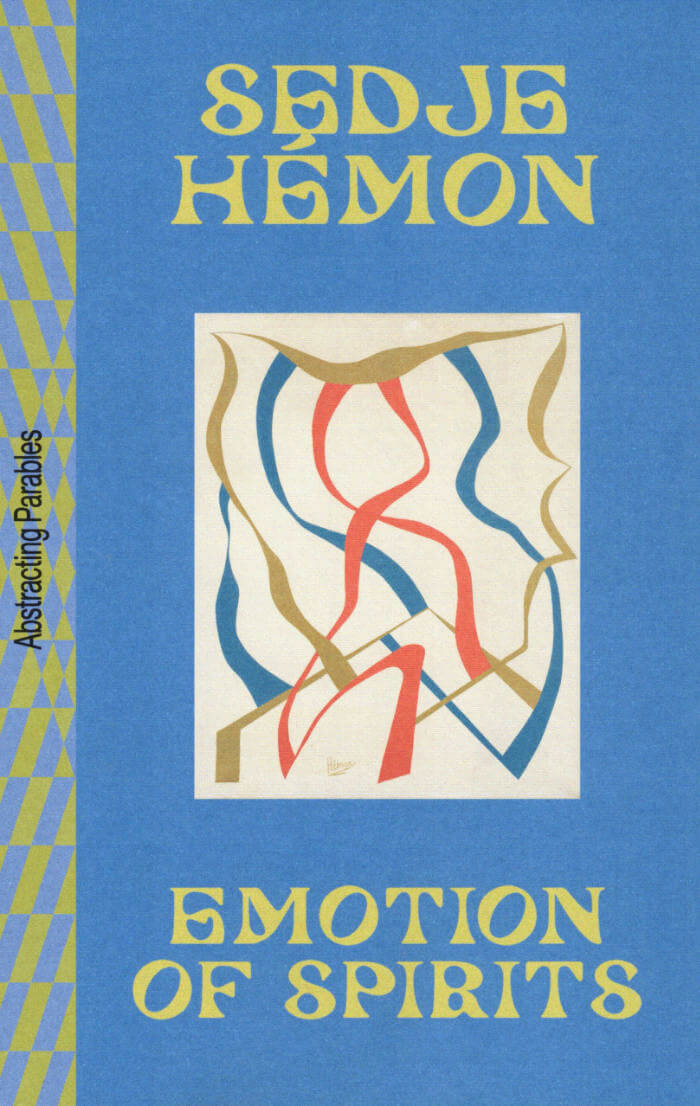
Emotion of Spirits
A panorama of the multifaceted and transversal production of Sedje Hémon, with fifteen essays.
Published on the occasion of the exhibition "Sedje Hémon. Imran Mir. Abdias Nascimento. Abstracting Parables", as part of the international Arnhem based art manifestation sonsbeek20→24, at Stedelijk Museum, Amsterdam, in 2022.
Dutch-Jewish painter and composer Sedje Hémon's (born Sedje Frank, 1923-2011) artistic practice was a deep deliberation on natural sciences, as well as an exploration of other ways of knowing. Her work was strongly influenced by her lived experience as a Shoah survivor and a member of the resistance movement. Educated as a violinist, incarceration during WWII left Hémon physically unable to play, upon which she turned her attention to painting—without ever abandoning music. During the 1950s and 1960s, she developed an intricate method for translating her paintings into musical scores. Hémon described her paintings as musical compositions, and their abstract forms are to be read as such—in relation to musical parameters such as duration, pitch, and timbre. Her visual works can actually be performed musically according to the system that she herself developed. Defiantly, Hémon worked to show the common origin and intersectionality of all arts and sciences, culminating in the development of a theory for the "integration of the arts."
Edited by Amal Alhaag, Aude Christel Mgba, Bonaventure Soh Bejeng Ndikung, Gwen Parry, Ibrahim Cissé, Krista Jantowski, Zippora Elders.
Contributions by Amal Alhaag, Bonaventure Soh Bejeng Ndikung, Ibrahim Cissé, Sophie Douala, Zippora Elders, Krista Jantowski, Aude Christel Mgba, Gwen Parry, Peter Jasper Wapperom, Elmyra van Dooren, Cannach MacBride, Siji Jabbar, Claire van Els, Marianna Maruyama, Maurice Rummens, Romy Rüegger, Jake Schneider.
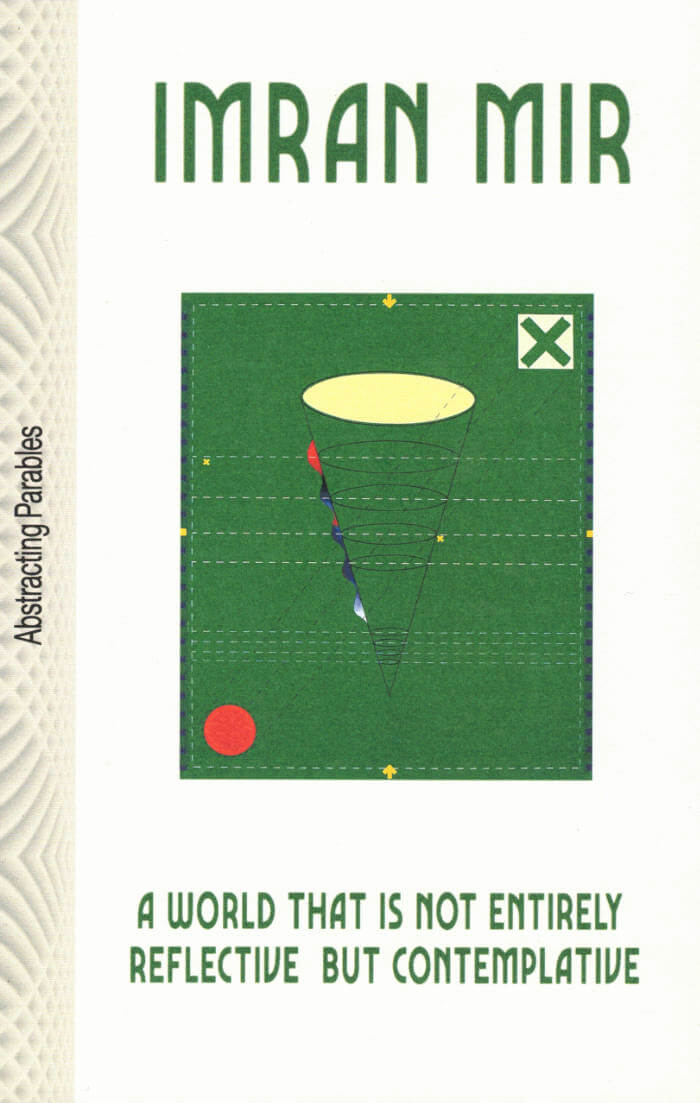
A World that is not entirely Reflective but Contemplative
A survey of Imran Mir's abstract and contemplative work, with fifteen essays.
Published on the occasion of the exhibition "Sedje Hémon. Imran Mir. Abdias Nascimento. Abstracting Parables", as part of the international Arnhem based art manifestation sonsbeek20→24, at Stedelijk Museum, Amsterdam, in 2022.
Pakistani artist, sculptor, and designer Imran Mir's (1950-2014) oeuvre can be interpreted as a constant refusal to provide comprehensive elaboration beyond what one experiences. The act of contemplation is a guiding principle to interpreting Imran Mir's work, an approach that reverberates into a practice that grew out of conversations with a community of artists, activists, poets, relatives, and other thinkers in Karachi.
Non-figurative, non-representational, geometrical and very bold, Imran Mir's works can be read as theorems and positions on multiple modernisms and abstractions. Without being a critique or a response, he played with the rules, bypassing and expanding them to other realms to explore ways of being, ways of knowing time and space outside of the confinements of the West.
Edited by Amal Alhaag, Aude Christel Mgba, Bonaventure Soh Bejeng Ndikung, Gwen Parry, Ibrahim Cissé, Krista Jantowski, Zippora Elders.
Contributions by Amal Alhaag, Bonaventure Soh Bejeng Ndikung, Ibrahim Cissé, Sophie Douala, Zippora Elders, Natasha Ginwala, Hajra Haider Karrar, Krista Jantowski, Momtaza Mehri, Aude Christel Mgba, Nighat Mir, Quddus Mirza, Gwen Parry, Nafisa Rizvi.
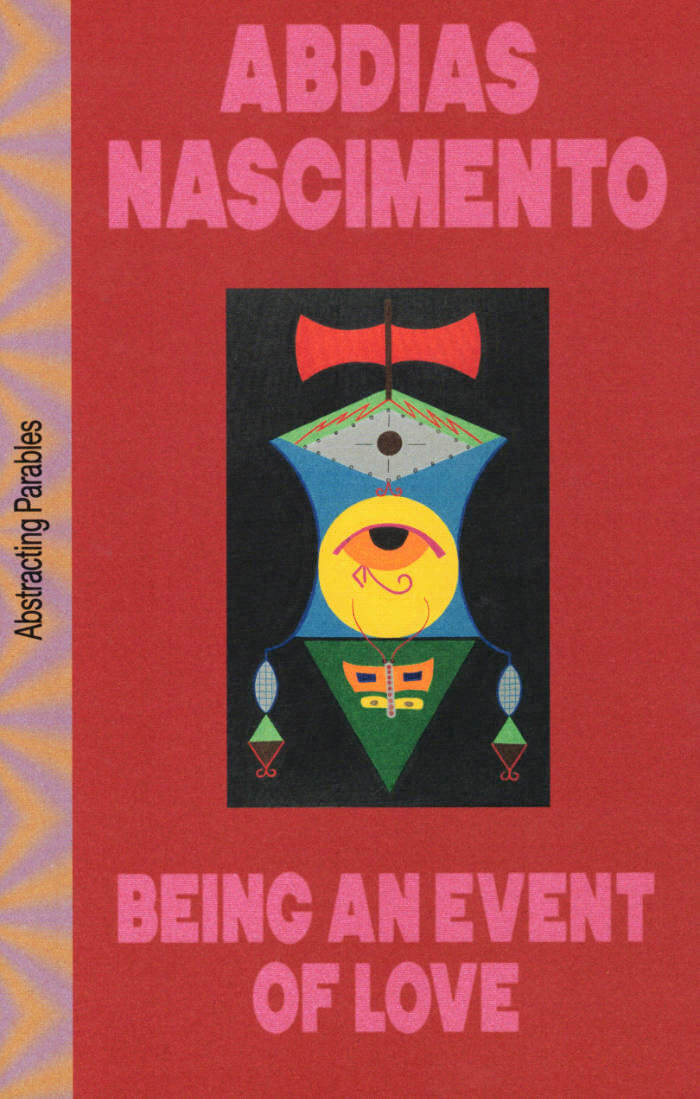
Being An Event of Love
A survey of the pictorial work of the Afro-Brazilian artist, writer and activist, with fifteen essays.
Published on the occasion of the exhibition "Sedje Hémon. Imran Mir. Abdias Nascimento. Abstracting Parables", as part of the international Arnhem based art manifestation sonsbeek20→24, at Stedelijk Museum, Amsterdam, in 2022.
The life and work of Afro-Brazilian painter, poet, essayist, dramatist, activist, and member of Parliament Abdias Nascimento (1914-2011) is a testament to his active commitment to Black expression and solidarity, both artistically and politically. Above all, Nascimento was a Pan-African activist. He organized the National Convention of Brazilian Blacks (1946) and the 1st Congress of Brazilian Blacks four years later. During the same period, he founded the Black Experimental Theater (1944) and the Black Arts Museum project (1950), both in Rio de Janeiro. While curating the latter, he began to develop his own creative work.
Edited by Amal Alhaag, Aude Christel Mgba, Bonaventure Soh Bejeng Ndikung, Gwen Parry, Ibrahim Cissé, Krista Jantowski, Zippora Elders.
Contributions by Abdias Nascimento, Bonaventure Soh Bejeng Ndikung, Shade Mary-Ann Olaoye, Amal Alhaag, Ibrahim Cissé, Sita Dickson Littlewood, Sophie Douala, Zippora Elders, Lélia González, Keyna Eleison, Krista Jantowski, Elisa Larkin Nascimento, Aude Christel Mgba, Goia Mujalli, Kabengele Munanga, Gwen Parry, Olabiyi Yai.
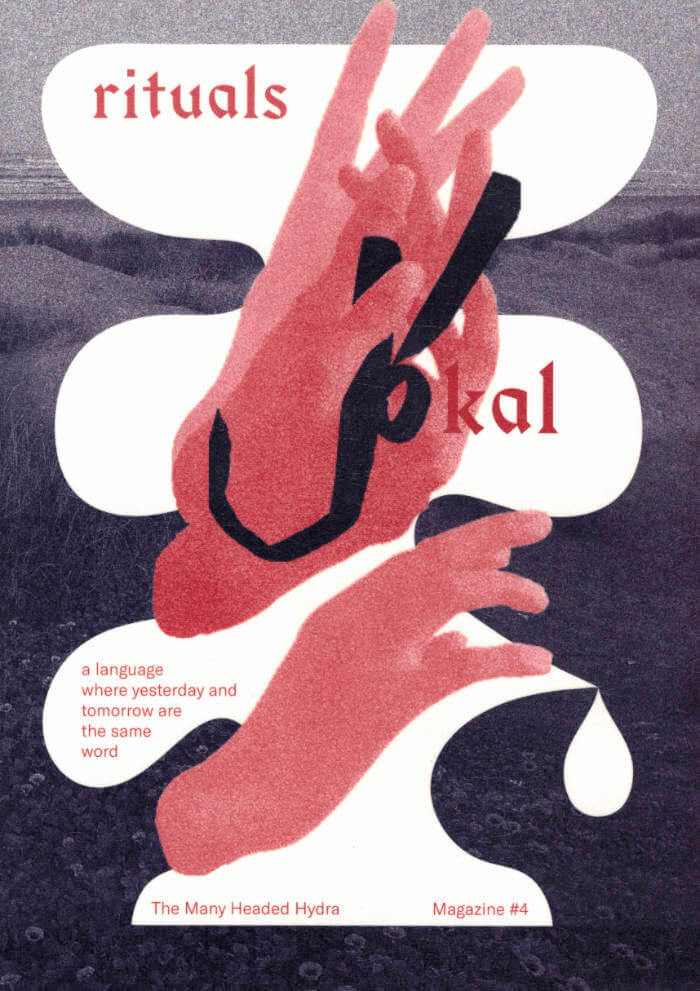
Kal Rituals – The Many Headed Hydra Magazine
The Many Headed Hydra, Aziz Sohail
The first in a series of publications emerging from the transoceanic platform Kal, Kal Rituals proposes queer and trans feminist ecologies, embodiments and mythmaking.
The contributions trace and disrupt cross-colonial legacies through bodies of water lapping at the shorelines of the Arabian Sea, the Indian Ocean, and the Atlantic.Kal Rituals is an ode to transterritorial alliances that disrupt binary contours of time and being. Kal Rituals assembles practices of queer world building in extended pandemic time, amidst deep ecological and social transformations, offering an expression of anti-colonial resistance and joy.
Kal is a transoceanic platform enacting queer-feminist pasts and futures and decolonialecologies from South Asia and its diasporas and post migrant Europe.
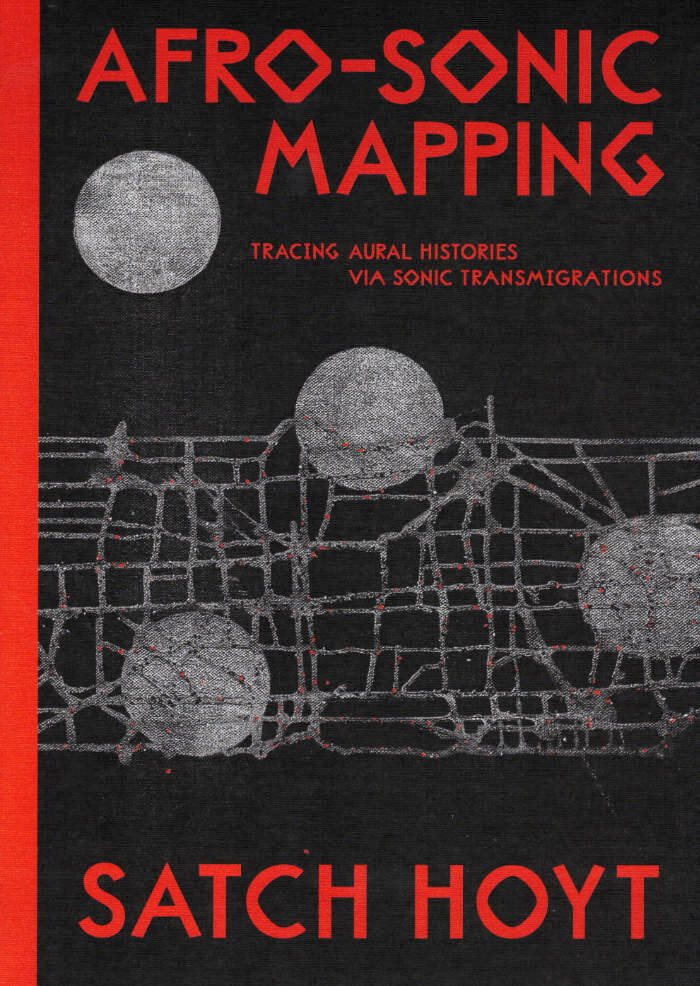
Afro-Sonic Mapping – Tracing Aural Histories via Sonic Transmigrations
An acoustic mapping of colonial history.
From his longstanding engagement to "un-mute" colonial sound collections captured during the European colonial period, Satch Hoyt's practice has been dedicated to intervene those collections and awake their sonicity, releasing phonogram recordings and instruments of different regions in Africa from the museological silence. For Hoyt, the sonic opens a portal to the acoustic mappings of history—testimonies of enslavement, resistance, empowerment and liberation, and also the amalgamations of today and the future.
For the book launch, Satch Hoyt in collaboration with Dirk Leyers performs live, intertwining historical and present recordings, vintage instruments and electronic music. By combining processed electric flute, electronic percussions, Congolese Sanzas, Brazilian Berimbau, synthesizers and recordings, Hoyt uncoveres layers of diasporic experience, reimagining memories of the African Diaspora from contemporary and future spaces in which, as Hoyt stays in the book, "the recorded past becomes the present".
"Imagine a counter-journey through a multi-media mixing board of Afro-Sonic resistance beginning on the Southwest coast of Africa in 1483 and playing back live the layered improvisations of Angolan musicians and artists from the Congo, Angola, Brazil, and Portugal. With breathtaking scope, Satch Hoyt has scrambled the signals of settlers and colonial theft. He chronicles here his archival research and exuberant artistic collaborations across a map of Afro-sensibility that resoundingly displays that culture is a living activity and a practice of creative hospitality and ultimately, the jam". —Tsitsi Jaji, author of Africa in Stereo: Music, Modernism, and Pan-African Solidarity (2014)
Contributions by Satch Hoyt, Anselm Franke, Paz Guevara, Louis Chude-Sokei, Sofia Lemos, Fred Moten, Greg Tate, Jihan El-Tahri, Kiluanji Kia Henda, MC Sacerdote, Khris, Suzana Sousa, Benjamin Sabby, ÀRÀKÁ collective, Alberto Pitta, Denise Ferreira da Silva, Rui Vieira Nery.

Holes Dug, Rocks Thrown – Line Skywalker Karlström's Works Through the Prism of Queer and Feminist Art Practices
First comprehensive monograph of the Swedish queer and feminist performance artist.
Holes Dug, Rocks Thrown is the first comprehensive presentation of Line Skywalker Karlström's work. It documents a practice, that over a period of more than twenty years have been committed to "queer feminist world making" using a performative and embodied approach. Correspondingly with Skywalker Karlström's understanding of art as a chaotic and associative knowledge production, which unfolds as a collaborative and ongoing conversation, their book has become a bastard monograph, which describes an artistic practice through its relationships and its flock. For the book, Skywalker Karlström has invited a number of colleagues to engage in conversations with them departing from selected works and jointly attempt to expand upon the strengths and qualities of queer and feminist artistic strategies. In addition to an extensive documentation of works, drawings and ephemera, Holes Dug, Rocks Thrown contains a number of inserts with works by other artists, which have informed Skywalker Karlström's art practice.
Line Skywalker Karlström (born 1971 in Karlstad, Sweden, lives and works in Berlin) is a Swedish performance artist who works with a diverse range of materials dealing with the role of art in life, lesbian and gay identity and the perception of space. Her performances take place in the public realm and also in gallery installations. Karlström was a member of the feminist performance group High Heels Sisters (2002-2007), and a founding member of YES! Association / Föreningen JA! (2005-2018), a group of Swedish artist activists that she left in 2009.
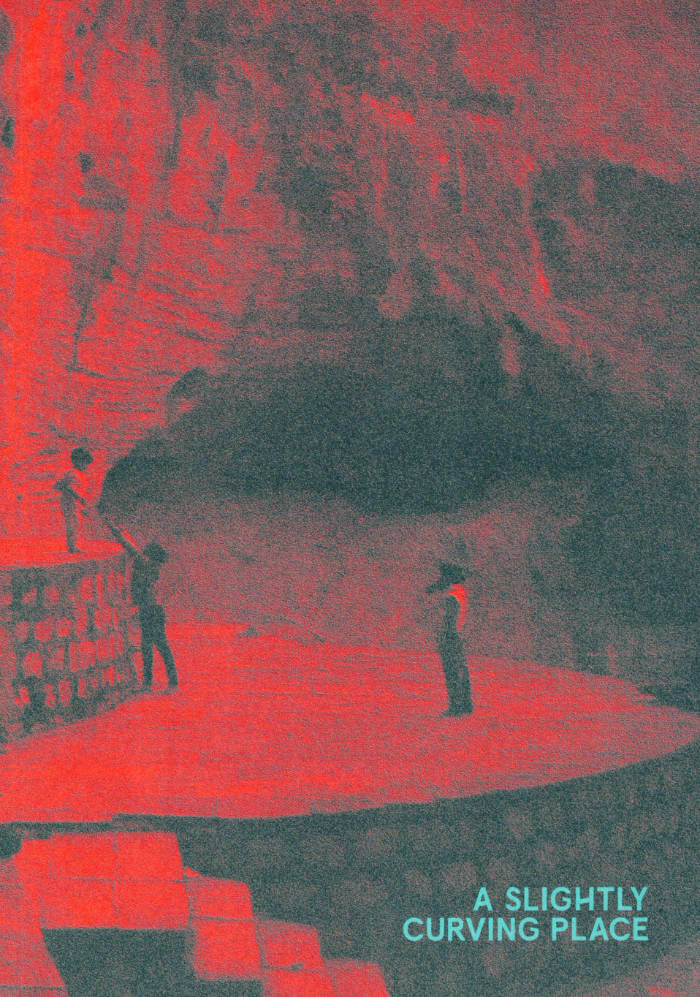
An Archaeology of Listening – A Slightly Curving Place
A proposition opened up by Umashankar Manthravadi in his practice as an acoustic archaeologist, bringing together writers, choreographers, composers, actors, dancers, musicians, field recordists and sound, light, and graphic designers who engage and transform each other's work.
The life and work of Umashankar Manthravadi is a history of sound and technology through the second half of the 20th century. As a self-taught acoustic archaeologist, he has been building ambisonic microphones since the 1990s to measure the acoustic properties of premodern performance spaces.
The publication An Archaeology of Listening accompanies the exhibition A Slightly Curving Place at Haus der Kulturen der Welt in 2020, and together they respond to the proposition in Manthravadi's practice that we can't just look for theaters in landscapes of the past—we must listen for them. Including scripts, scores, conversations, and essays, the publication considers its own format in relation to the notion of writing as the first sound-recording device.
This book was conceived in relation to the programme Coming to Know, accompanying the exhibition A Slightly Curving Place at Haus der Kulturen der Welt in Berlin in 2020. It is the first in a series of volumes titled An Archaeology of Listening.
Umashankar Manthravadi is an Indian self-taught acoustic archaeologist, sound technician, sound recordist, journalist and poet. In the early 1980s, Manthravadi helped set up and maintain one of the world's largest ethnomusicology archives, Archives and Research Center for Ethnomusicology (ARCE) in Gurgaon. As part of the artist collective Umashankar and the Earchaeologists (with Lawrence Abu Hamdan and Nida Ghouse) he investigates how sound can influence our understanding of ancient and contemporary sites. He developed ambisonic technology to document the acoustic properties of archaeological sites in India, examining in particular social forms and their actualization in performance and sound.
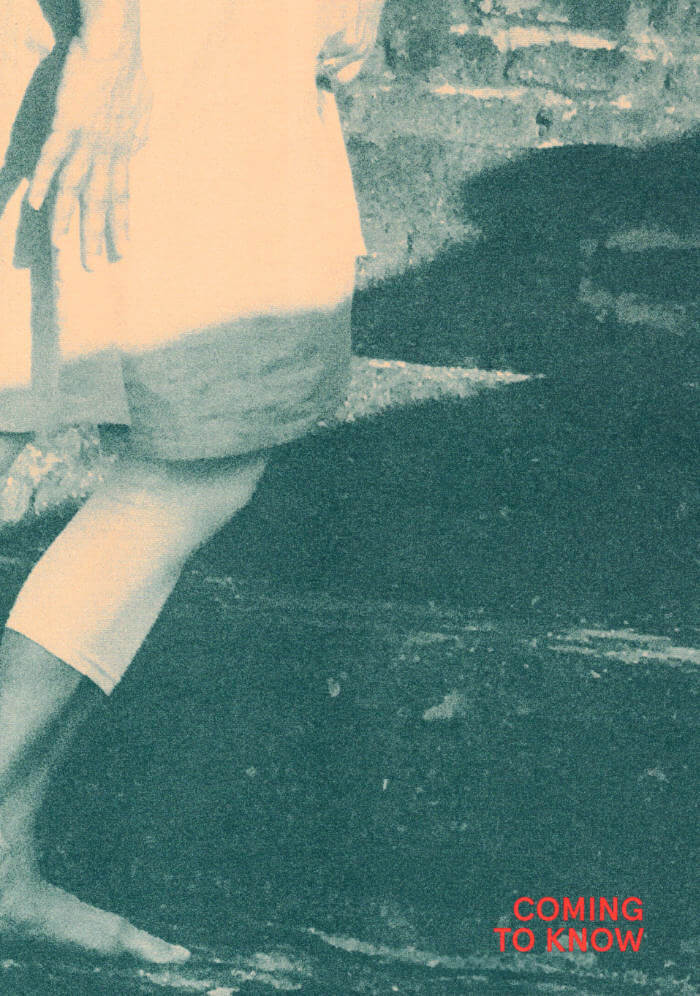
An Archaeology of Listening – Coming to Know
Premodern acoustic traces as the basis for new communities of thought in the present (a project responding to the work of the self-taught acoustic archaeologist Umashankar Manthravadi).
Coming to Know asks how listening to the past together might transform our sense of the knowledge held in common. It sets aside the visual techniques of the archaeological site, the museum, and the larger project of colonial modernity, and instead constitutes itself as a resonant structure—a future-oriented monument to historically situated listening bodies as well as a dwelling place for community now.
This book was conceived in relation to the programme Coming to Know, accompanying the exhibition A Slightly Curving Place at Haus der Kulturen der Welt in Berlin in 2020. It is the second in a series of volumes titled An Archaeology of Listening.
Contributions by Tanvi Solanki, Mark Payne, Annie Goh, Uzma Z. Rizvi, Annette Wilke, Andrew Ollett, Anurima Banerji, Tapati Guha-Thakurta, Phiroze Vasunia...

Expanded Nature – Écologies du cinéma expérimental
If it can be said that experimental filmmakers are "expanding" the artistic field through an exploration of the potencies, modes of dissemination, or even performance of the moving image, in the Anthropocene age, these practices hope for another kind of expansion: to expand our experience of nature.
Appending flowers to the film strip or burying it in the ground, inventing observation devices, allowing the camera to be affected by natural forces, engaging one's own filming body in a symbiotic relationship with the environment, reconstituting ecosystems at the moment of projection: the ecologies of experimental cinema presented in this book constitute forms of practice and engagement that awaken a heightened sensitivity to the living world through cooperative links, casting other beings as subjects and agents of filmic processes, and, finally, reshaping the economy of filmmaking. Thus, ecologies of perception, medium, production and multinaturalism are deployed, contributing to the restoration of our sensory bond with the natural world.
Addressing technical, aesthetic and anthropological issues of cinema, Expanded Nature – Écologies du cinéma expérimental (Ecologies of Experimental Cinema) considers how filmmakers and collectives from different parts of the globe form communities with other non-human beings and work through their films to deconstruct human privilege. At the crossroads of disciplines, anthropologists, philosophers, filmmakers and artists, and researchers in visual studies come together and investigate a different history of cinema, written from the point of view of nature.
Texts by Elio Della Noce, Scott MacDonald, Jean-Michel Durafour, Kim Knowles, Philip Hoffman & Janine Marchessault, Karel Doing, Chris Dymond, Alice Leroy, Rose Lowder, Chris Welsby, Yaniv Touati, Bidhan Jacobs, Lucas Murari, Teresa Castro, Colectivo Los Ingrávidos, Elizabeth A. Povinelli, Gérard Leblanc, Frédéric Brayard, Jacques Perconte, Vincent Deville, Lukas Brasiskis & Charlie Hewison.

Quantum Listening
What is the difference between hearing and listening? Does sound have consciousness? Can you imagine listening beyond the edge of your own imagination?
In response to the anti-war movements of the 1960s, pioneering musician and composer Pauline Oliveros began to expand the way she made music, experimenting with meditation, movement and activism in her compositions. Fascinated by the role that sound and consciousness play in our daily lives, Oliveros developed a series of Sonic Meditations that would eventually lead to the creation of Deep Listening – a practice for healing and transformation open to all, rooted in her musicianship.
Quantum Listening is a manifesto for listening as activism. Through simple yet profound exercises, Oliveros shows how Deep Listening is the foundation for a radically transformed social matrix: one in which compassion and peace form the basis for our actions in the world.
This timely edition brings Oliveros’ futuristic vision – blending technology and spirituality – together with a new Foreword and Introduction by Laurie Anderson and IONE.
[Note from the publisher]
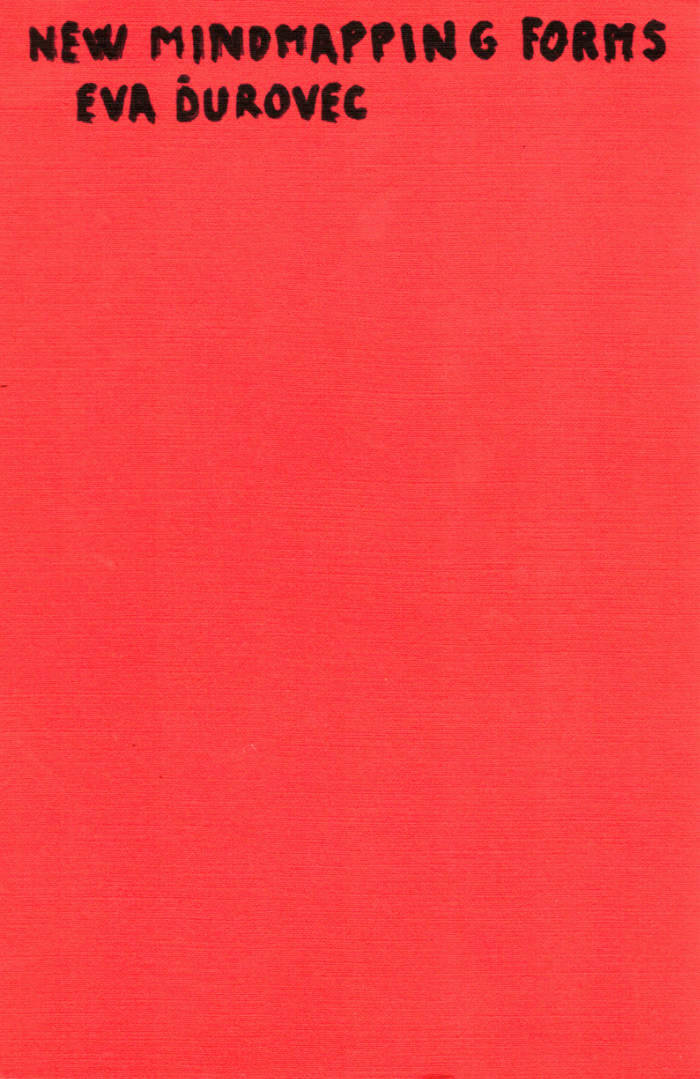
New Mind Mapping Forms
There is a story about a meatball which comes out of nowhere, hitting some people's heads and changing their lives forever. There is a mouse that gets caught while trying to find a cheesy snack. There has been a 100% increase in the cost of rent in Berlin in the past 10 years and no increase in my wages. A bag full of basmati rice. A teacher stuck at work waiting for students stuck at work. There is the price one pays to purchase organic underwear so that their intimate parts are not stifled from nine hours in the office chair. There are 10 missed calls from my mother. There are places to which one cannot return and cities where it is impossible to live. There are fertility treatments that send fish oil straight into the veins two days before and two days after ovulation. The feeling of a needle in the middle of the uterus, which could be due to pregnancy, or due to fear. There is a Master's thesis which is no Master's thesis. There is a book that was not intended to be published, that was not intended to be read.
Eva Ďurovec works as a software tester 40 hours per week and studies art at the same time. There are not enough hours in the day to complete everything, to comply with everything. And then there is also her desire to have children. The question: how can all of this be reconciled within the profession of artist? Ďurovec investigates the possibilities that arise from different class formats, and asks what we produce and reproduce—with our bodies, through our routines, trapped between the recurring desires and cruelties of daily life.
Eva Ďurovec (*1981 in Snina, former Czechoslovakia) studied Spatial Strategies at Kunsthochschule Berlin-Weiensee. Her work deals with living-space and life-fulfillment in the context of social, economic, and environmental crises, and with issues of corporate power and kleptocracy.
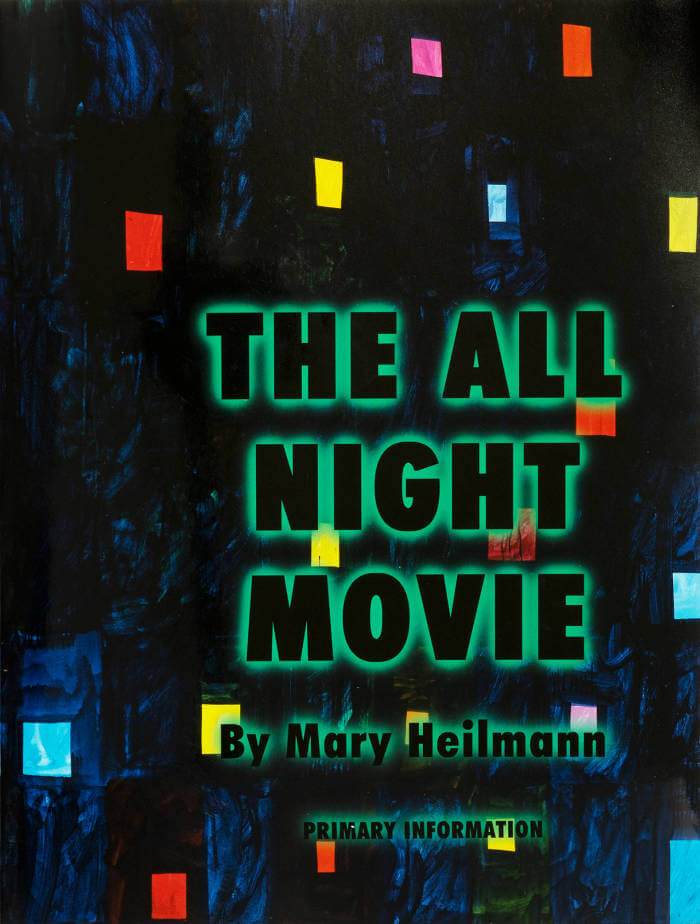
The All Night Movie
Created by Mary Heilmann in 1999, The All Night Movie beautifully wraps a memoir inside of a monograph, creating an artist book in which each page is designed as though it were a painting. The artist delicately utilizes color, text, candid photographs, reproductions of paintings, and song lyrics that unfold seamlessly to create an immersive visual experience. Heilmann has described the book as “the story of my life, told in words, painted images and photographs.”
Across eight chapters, Heilmann recounts her life, from childhood in California through New York in the 1990s, providing intimate insight into the development of her work, friendships, and formative life experiences. Snapshots by the artist and others provide a portrait of Heilmann’s evolving artistic community, which included Gordon Matta-Clark, Pat Hearn, Dicky Landry, Jack Pierson, Keith Sonnier, Pat Steir, William Wegman, and Jackie Winsor, among others. And this is just the first half of the book. Included with the artist’s memoir is an essay by Jutta Koether and a survey of paintings from 1972-1999. This highly revered and extremely scarce publication was co-designed with Mark Magill and is reproduced here as a facsimile edition. The All Night Movie was originally published by Hauser & Wirth and Offizin Verlag.
Mary Heilmann was born in San Francisco in 1940. She studied at the University of California at Santa Barbara, San Francisco State University and the University of California at Berkeley before moving to New York in 1968. Heilmann began her career creating sculpture before quickly pivoting into abstract painting once on the East Coast, experimenting with bright colors and unusual geometries that bridge two-dimensional and three-dimensional elements. She has been the recipient of the Anonymous Was a Woman Foundation Award as well as a Guggenheim Foundation award.